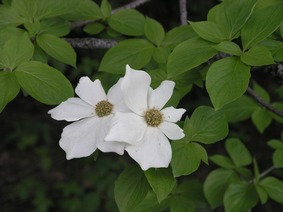Recently I had the honor to tour a remarkable garden in Scotts Valley. This horticulturalist calls himself a hillbilly gardener but he is no such thing. Some of his plants come from as far away as Oklahoma, Texas and Hawaii. What a thrill to see spring growth emerge from the new leaves of his unusual trees, flowering shrubs and perennials.
Our first stop was to admire his large collection of echium candicans or Pride of Madeira. These stately shrubs reach 5-6 ft tall and 6-10 ft wide so they make quite a show when the huge flower clusters are in full bloom. Being deer resistant and droug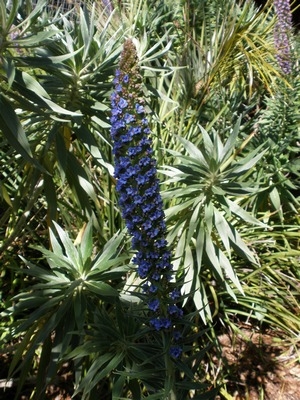 ht tolerant they are perfect for our mountain environment. The color of the spikes varied from pink to lilac, sapphire blue and purple. This gardener is resourceful. He got many of his seedlings along Hwy 17 where they had reseeded after being used as brush to stabilize the slopes after the ’89 earthquake. The bees were really happy visiting the hundreds of blossoms on the beautiful spring day that I was there.
ht tolerant they are perfect for our mountain environment. The color of the spikes varied from pink to lilac, sapphire blue and purple. This gardener is resourceful. He got many of his seedlings along Hwy 17 where they had reseeded after being used as brush to stabilize the slopes after the ’89 earthquake. The bees were really happy visiting the hundreds of blossoms on the beautiful spring day that I was there.
Tucked under wild cherry trees collected in Texas, are second generation iris of dark purple and pure yellow. Originally from his grandmother’s garden in Virginia, these iris are descendants from a light blue variety and a pale yellowish-beige douglas iris.
This extraordinary gardener also has a huge wild rose from Missouri covered now with fragrant white flowers, a wild olive from Texas and a sand plum from Oklahoma. There is a yucca about 4 ft tall that he and his brother started as cuttings when they were teenagers in Port Arthur, Texas. He is also the proud father of a couple of bald cypress complete with "knees". This tree of southern swamps and other low nutrient areas grows woody projections above the ground or water level to act as a structural support and stabilizer allowing them to resist very strong winds. Even hurricanes rarely overturn them.
A beautiful Canary Island palm, planted from a seedling in 1996 that he had nurtured in a gallon can, is now over 9 ft tall. Akebia vines grow up oak trees, passiflora and white wisteria vines up redwoods, a yellow banksia rose rambles up into a madrone and madevillea laxa is happy growing up an oak, too. A willow-leafed hakea salicifolia, indigenous to New South Wales and Queensland, graces his entry with its tiny, white fragrant flowers.
Other trees this gardener loves include Causarina, native also to Australia, sugar pine, incense cedar, Western red cedar, deodar cedar, staghorn sumac and a maytens tree. His mother in Pennsylvania taught him to plant his first garden at age 4 and he cherishes his Eastern white pines, pinus stroblis, and giant sequoias, three of which he grew from seed.
And I can’t forget his collection of salvias. The red flowers spike of salvia confertiflora bloom year round. The beautiful salvia mexicana will soon to be covered with rich, blue flowers. He also grows salvia chiapensis and a salvia-like plant native to Hawaii called salvia lepechinia. This deliciously scented plant will be covered soon with reddish lavender lipstick-like flowers adored by hummingbirds like all the salvias.
A new greenhouse where he has a small collection of orchids will soon house new seedlings that are sprouting in a germination station under lights. Of the many Hawaiian seeds he has collected are maile, a flowering plant that is probably the oldest and most popular material used in leis by early Hawaiians, milo- a chocolate and malt powder popular in many parts of the world, gossypium tomentosum, coral vines, hibiscus and the koa tree.
There were hundreds more cool plants I learned about and got to admire that day. I’ll be visiting this garden again and again for the next round of wonders. it’s a marvel.

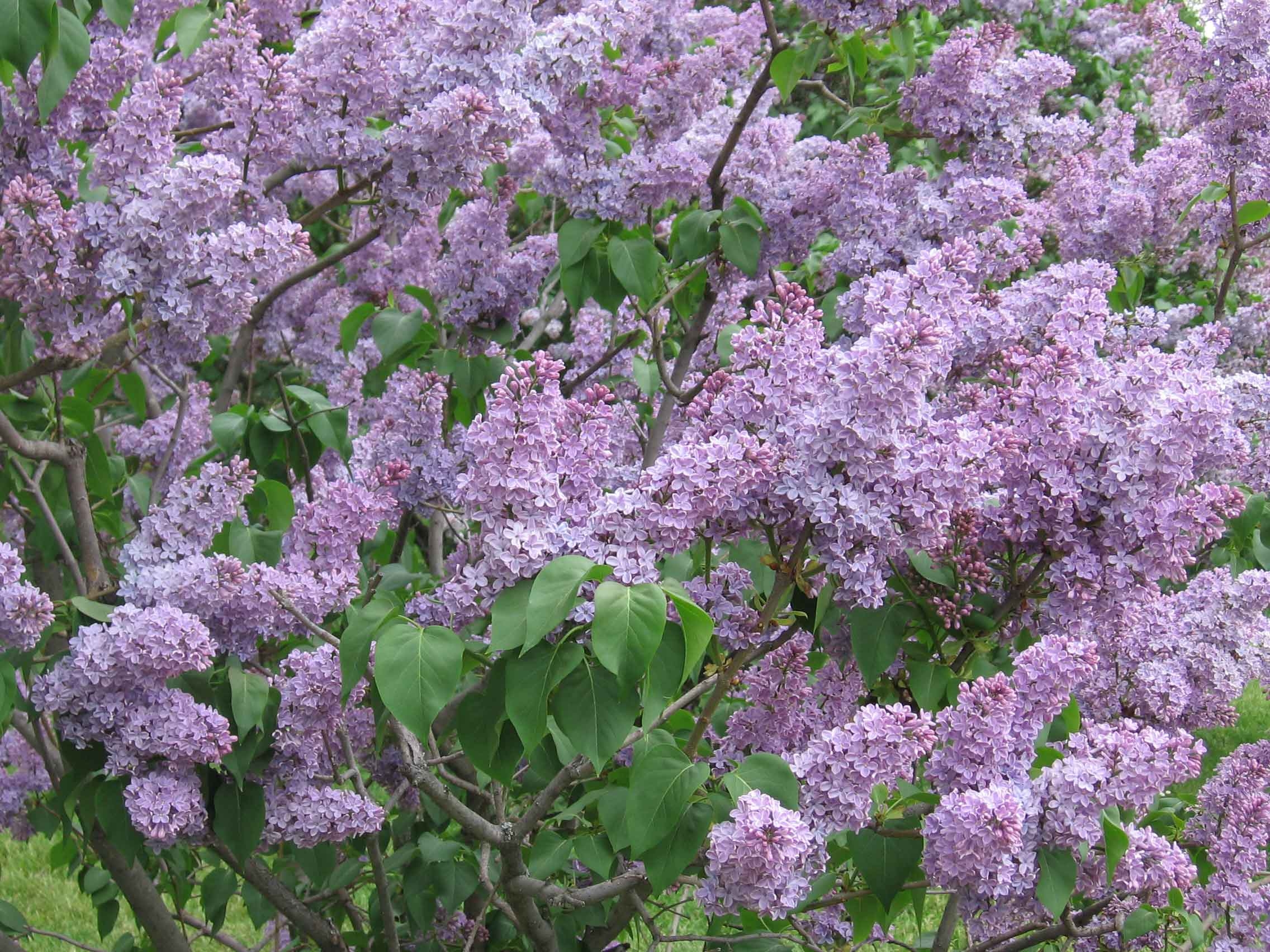 nce. Lavender Lady lilac would bring delicious fragrance to the garden. How about adding an accent tree like a Echtermeyer weeping crabapple with purple-red blooms? The birds love the wine red fruit that hand on the tree during the winter. Forest Pansy redbud also look terrific in the garden. Their burgundy heart shaped leaves turn orange in the fall are an added bonus after bright magenta spring flowers.
nce. Lavender Lady lilac would bring delicious fragrance to the garden. How about adding an accent tree like a Echtermeyer weeping crabapple with purple-red blooms? The birds love the wine red fruit that hand on the tree during the winter. Forest Pansy redbud also look terrific in the garden. Their burgundy heart shaped leaves turn orange in the fall are an added bonus after bright magenta spring flowers.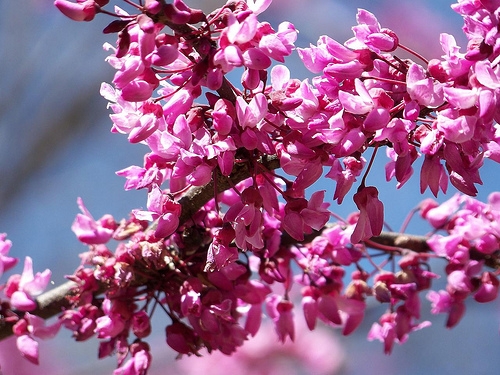 . Keep the garden simple and restful. Editing some of the plants will make the garden lower maintenance, too. Plants that have overgrown the space need constant pruning. Move them to a better spot.
. Keep the garden simple and restful. Editing some of the plants will make the garden lower maintenance, too. Plants that have overgrown the space need constant pruning. Move them to a better spot.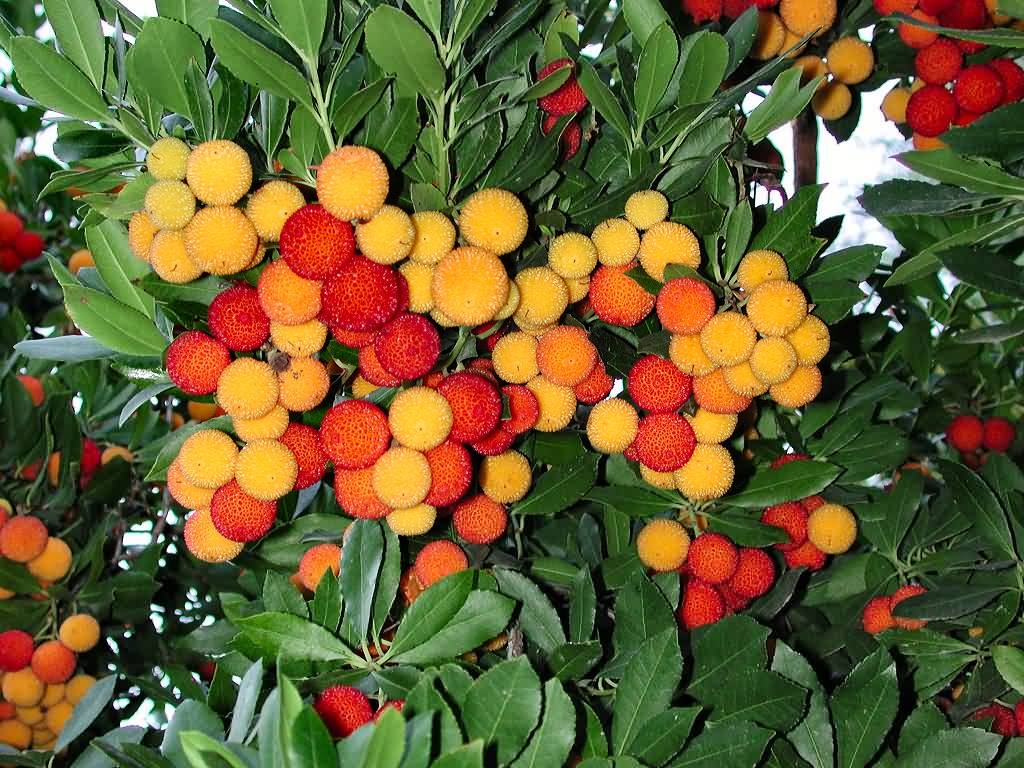
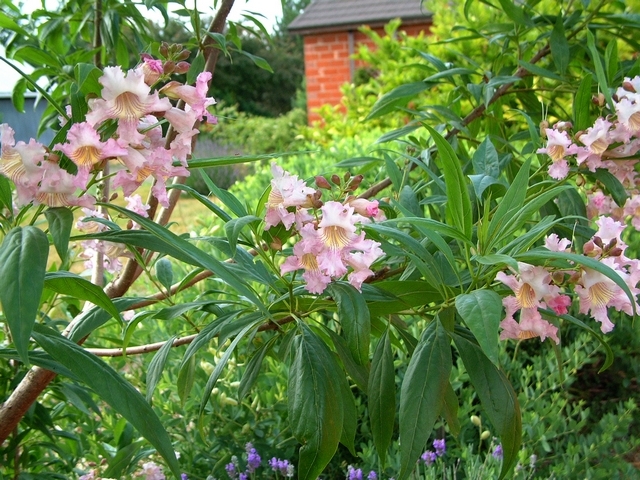 hitalpa – a rapid growing 20-30 ft. tree that combines toughness with beauty. From late spring through fall, clusters of frilly, trumpet-shaped pink or white flowers appear. Chitalpa’s like full sun and need only little to moderate water.
hitalpa – a rapid growing 20-30 ft. tree that combines toughness with beauty. From late spring through fall, clusters of frilly, trumpet-shaped pink or white flowers appear. Chitalpa’s like full sun and need only little to moderate water.